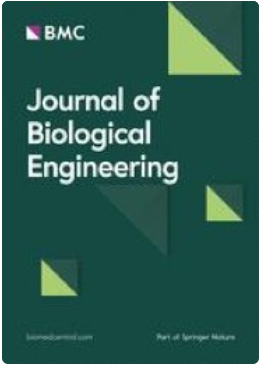通过 IEDDA 介导的位点特异性白蛋白共轭增强抗体片段的治疗潜力
IF 5.7
3区 生物学
Q1 BIOCHEMICAL RESEARCH METHODS
引用次数: 0
摘要
利用单链可变片段(scFv)治疗癌症和免疫系统疾病等人类疾病已引起广泛关注。然而,scFv 的一个重要缺点是血清半衰期极短,这限制了其治疗潜力。因此,临床应用迫切需要延长 scFv 的血清半衰期。人血清白蛋白(HSA)是一种很有前景的血清半衰期延长剂,它是人体血清中含量最高的蛋白质,已知其血清半衰期特别长。然而,将大分子半衰期延长剂与 scFv 等小分子蛋白质共轭,往往会导致其关键特性的显著丧失。在本研究中,我们将 HSA 与 scFv 的一个允许位点共轭,以改善药代动力学特征。为了确保 HSA 连接后对 scFv 抗原结合能力的破坏最小,我们采用了一种位点特异性连接方法,使用了一种能促进硫醇-马来酰亚胺反应和反电子需求 Diels-Alder 反应(IEDDA)的杂官能团交联剂。我们选择了曲妥珠单抗衍生的 4D5scFv 作为模型蛋白,曲妥珠单抗是一种用于治疗人表皮生长因子 2(HER2)阳性乳腺癌的治疗性抗体。我们在通过计算方法预测的候选连接位点上引入了含有高活性四嗪基团(frTet)的苯丙氨酸类似物。使用连接剂 TCO-PEG4-MAL,将单个 HSA 分子与 4D5scFv (4D5scFv-HSA)定点连接。4D5scFv-HSA 共轭物的 HER2 结合亲和力与未修饰的 4D5scFv 相当。此外,在小鼠药代动力学图谱中,4D5scFv-HSA 的血清半衰期约为 12 小时,是 4D5scFv 的 85 倍。4D5scFv-HSA 的抗原结合结果和药代动力学特征表明,位点特异性白蛋白结合的 scFv 在延长血清半衰期的同时保持了其结合亲和力。总之,我们开发出了一种制备位点特异性白蛋白共轭 4D5scFv 的有效策略,可用于多种临床应用并提高疗效。本文章由计算机程序翻译,如有差异,请以英文原文为准。
Enhanced therapeutic potential of antibody fragment via IEDDA-mediated site-specific albumin conjugation
The use of single-chain variable fragments (scFvs) for treating human diseases, such as cancer and immune system disorders, has attracted significant attention. However, a critical drawback of scFv is its extremely short serum half-life, which limits its therapeutic potential. Thus, there is a critical need to prolong the serum half-life of the scFv for clinical applications. One promising serum half-life extender for therapeutic proteins is human serum albumin (HSA), which is the most abundant protein in human serum, known to have an exceptionally long serum half-life. However, conjugating a macromolecular half-life extender to a small protein, such as scFv, often results in a significant loss of its critical properties. In this study, we conjugated the HSA to a permissive site of scFv to improve pharmacokinetic profiles. To ensure minimal damage to the antigen-binding capacity of scFv upon HSA conjugation, we employed a site-specific conjugation approach using a heterobifunctional crosslinker that facilitates thiol-maleimide reaction and inverse electron-demand Diels-Alder reaction (IEDDA). As a model protein, we selected 4D5scFv, derived from trastuzumab, a therapeutic antibody used in human epithermal growth factor 2 (HER2)-positive breast cancer treatment. We introduced a phenylalanine analog containing a very reactive tetrazine group (frTet) at conjugation site candidates predicted by computational methods. Using the linker TCO-PEG4-MAL, a single HSA molecule was site-specifically conjugated to the 4D5scFv (4D5scFv-HSA). The 4D5scFv-HSA conjugate exhibited HER2 binding affinity comparable to that of unmodified 4D5scFv. Furthermore, in pharmacokinetic profile in mice, the serum half-life of 4D5scFv-HSA was approximately 12 h, which is 85 times longer than that of 4D5scFv. The antigen binding results and pharmacokinetic profile of 4D5scFv-HSA demonstrate that the site-specifically albumin-conjugated scFv retained its binding affinity with a prolonged serum half-life. In conclusion, we developed an effective strategy to prepare site-specifically albumin-conjugated 4D5scFv, which can have versatile clinical applications with improved efficacy.
求助全文
通过发布文献求助,成功后即可免费获取论文全文。
去求助
来源期刊

Journal of Biological Engineering
BIOCHEMICAL RESEARCH METHODS-BIOTECHNOLOGY & APPLIED MICROBIOLOGY
CiteScore
7.10
自引率
1.80%
发文量
32
审稿时长
17 weeks
期刊介绍:
Biological engineering is an emerging discipline that encompasses engineering theory and practice connected to and derived from the science of biology, just as mechanical engineering and electrical engineering are rooted in physics and chemical engineering in chemistry. Topical areas include, but are not limited to:
Synthetic biology and cellular design
Biomolecular, cellular and tissue engineering
Bioproduction and metabolic engineering
Biosensors
Ecological and environmental engineering
Biological engineering education and the biodesign process
As the official journal of the Institute of Biological Engineering, Journal of Biological Engineering provides a home for the continuum from biological information science, molecules and cells, product formation, wastes and remediation, and educational advances in curriculum content and pedagogy at the undergraduate and graduate-levels.
Manuscripts should explore commonalities with other fields of application by providing some discussion of the broader context of the work and how it connects to other areas within the field.
 求助内容:
求助内容: 应助结果提醒方式:
应助结果提醒方式:


